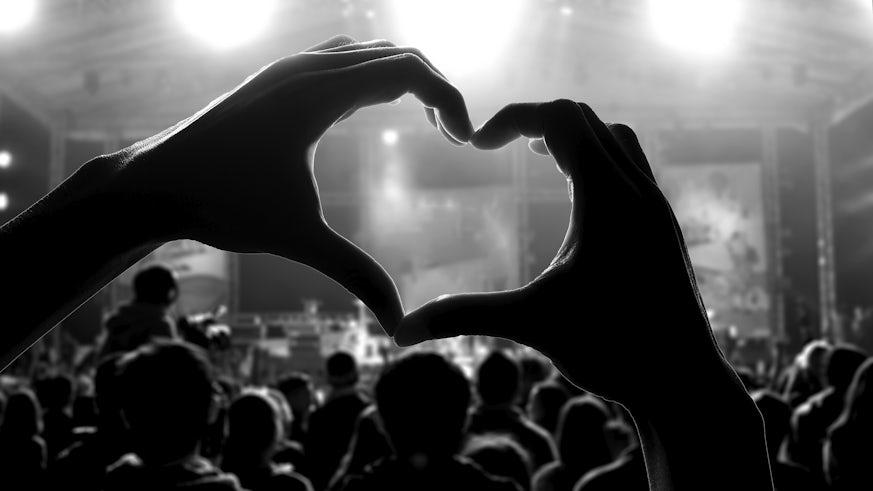The cult of celebrity: school children’s modern day heroes
26 February 2016

New research, from The Wales Institute of Social, Economic, Research & Methods (WISERD), has uncovered which famous people school pupils most admire and dislike.
The findings reveal that the most admired are celebrities and sportspeople: with Jessie J, Taylor Swift and Beyonce achieving the top three positions.
Pupils nominated a wide variety of people – stretching alphabetically from Adele and Adolf Hitler to Zara Philips and Zayn Malik. While there were nominations for political activists and writers, nearly three-quarters of all nominations were for pop stars and sport personalities.
“The nature of children’s heroes and villains has come under increased scrutiny in recent years as there is a fear young people today are too heavily influenced by ‘popular culture’, and in particular the ‘cult of the celebrity’,” explains Dr Kevin Smith.
The findings come from part of a larger self-completion survey within the WISERD Education project, based at Cardiff University. Children were asked to identify which three famous people they most admired and which three they most disliked. Over 7000 names were provided by the pupils. The researchers focused on those ‘famous people’ who were identified as a ‘hero’ or ‘villain’ by at least five respondents.
“For those involved with education there are additional concerns that children and young people look up to individuals who should not be looked up to – individuals whose short-lived fame is based on luck, physical prowess or limited talent, rather than more enduring and socially beneficial achievements. Relatedly, it has been claimed that the ‘cult of the celebrity’ is creating a climate in which young people seek to realise themselves through ‘fame’ and reject the more traditional pathway to success – academic achievement, hard work and educational qualifications. Despite all these concerns, very little research has been done on who it is that children and young people actually admire and dislike.”
“We can see that concerns about the ‘capture’ of young people by popular culture appear to be justified,” explains Professor Sally Power. “With the exception of Jessica Ennis-Hill (athlete), all the female ‘heroes’ in the Top 20 are pop singers. The male ‘heroes’ do include pop stars (and one ‘boy band’), but are mainly footballers and rugby players (four play for the Wales national sides). Only two politicians were nominated – with Barrack Obama in 40th place and Boris Johnson (Conservative London Mayor) in 100th place.”
The ‘disliked’ nominations are drawn from a wider range of fields, including actors, presenters and politicians – with UK Prime Minister David Cameron making it into the ‘top 10’ most disliked – two places ahead of Adolf Hitler.
“If we take these nominations as indicative of young people’s values then there would appear to be good grounds to believe some of the worst fears about the influence of
popular culture on young people’s values. For example, it could be argued that their choices display a lack of ability to discriminate between contributions that are of lasting social value and those which are more fleeting. Are the achievements of Nelson Mandela (only appearing as a ‘hero’ in 34th place) to be relegated behind the achievements of pop singers whose names many may now find hard to remember at all? Does Justin Bieber really deserve to be disliked by so many more young people than Adolf Hitler or Osama bin Laden? However, this would be a very simplistic interpretation of the data,” continues Professor Power.
Additionally, the majority (55%) of 84 villains were other people’s heroes. The findings suggest some nominations may be less to do with the famous people themselves and more to do with the way in which young people foster allegiances. ‘Seen in this way, admiration or dislike for particular famous people can be seen as a form of identity work of affirmation and cultural belonging. This is evident in the clear gender differences – both in terms of the respondents and their nominations,’ summarises Professor Power.
Similar patterns of nomination were found in terms of ethnicity. Over 70% of nominations from white respondents were for famous white people, while Black Asian and Minority Ethnic (BAME) respondents were twice as likely to have nominated a famous BAME person than white respondents. ‘The landscape of celebrities is highly ‘raced’ and ‘gendered’ and our young people’s nominations reflect this landscape. As men are over-represented in most walks of public life generally, it is not surprising that they are over-represented in our young people’s nominations of ‘heroes’ and ‘villains’,’ adds Professor Power.
“These patterns suggest that the use of famous people and celebrities in the development of identities and allegiances may provide the ‘glue’ for developing social ties and affirm the achievements of women and black and minority ethnic people. However, the fields of their achievements – particularly for women – are relatively narrow which is as likely to compound as to challenge notions of female and minority ethnic success,” concludes Professor Power.